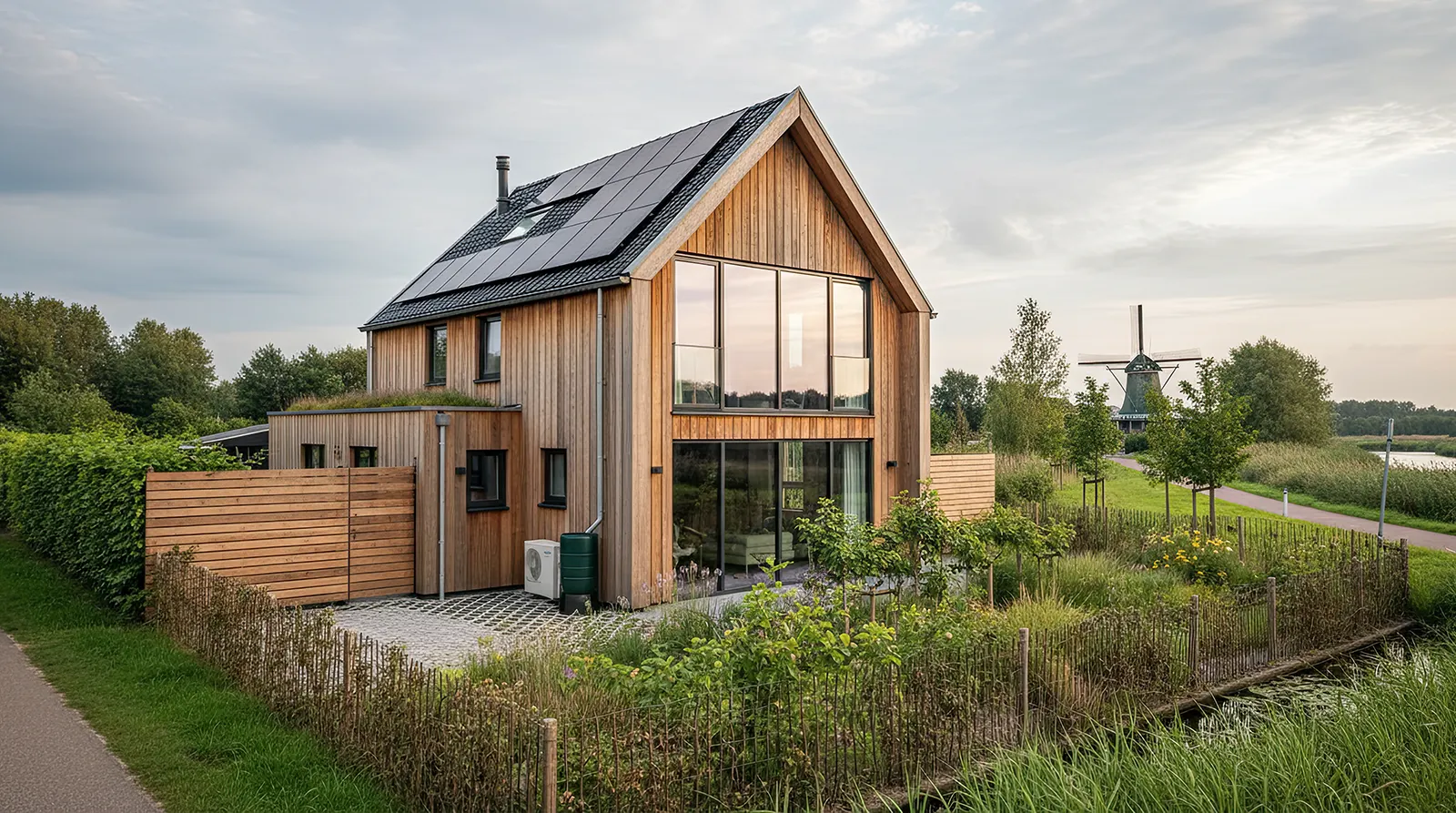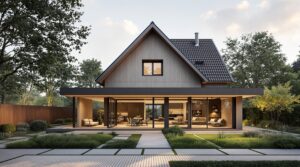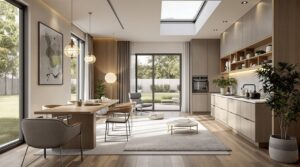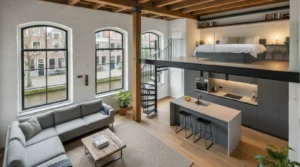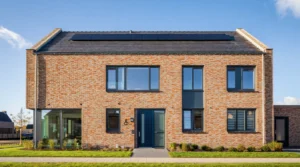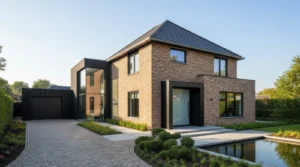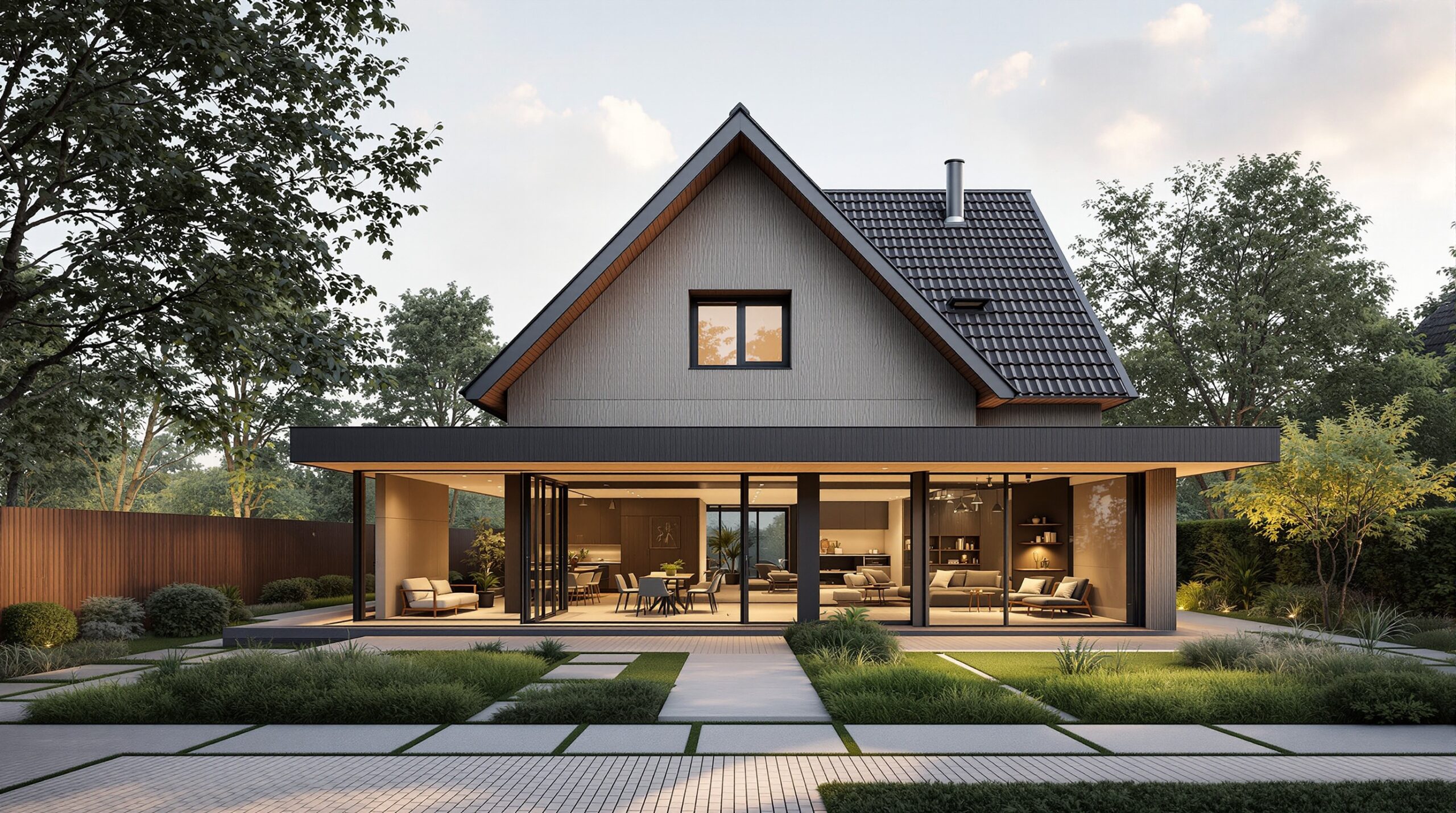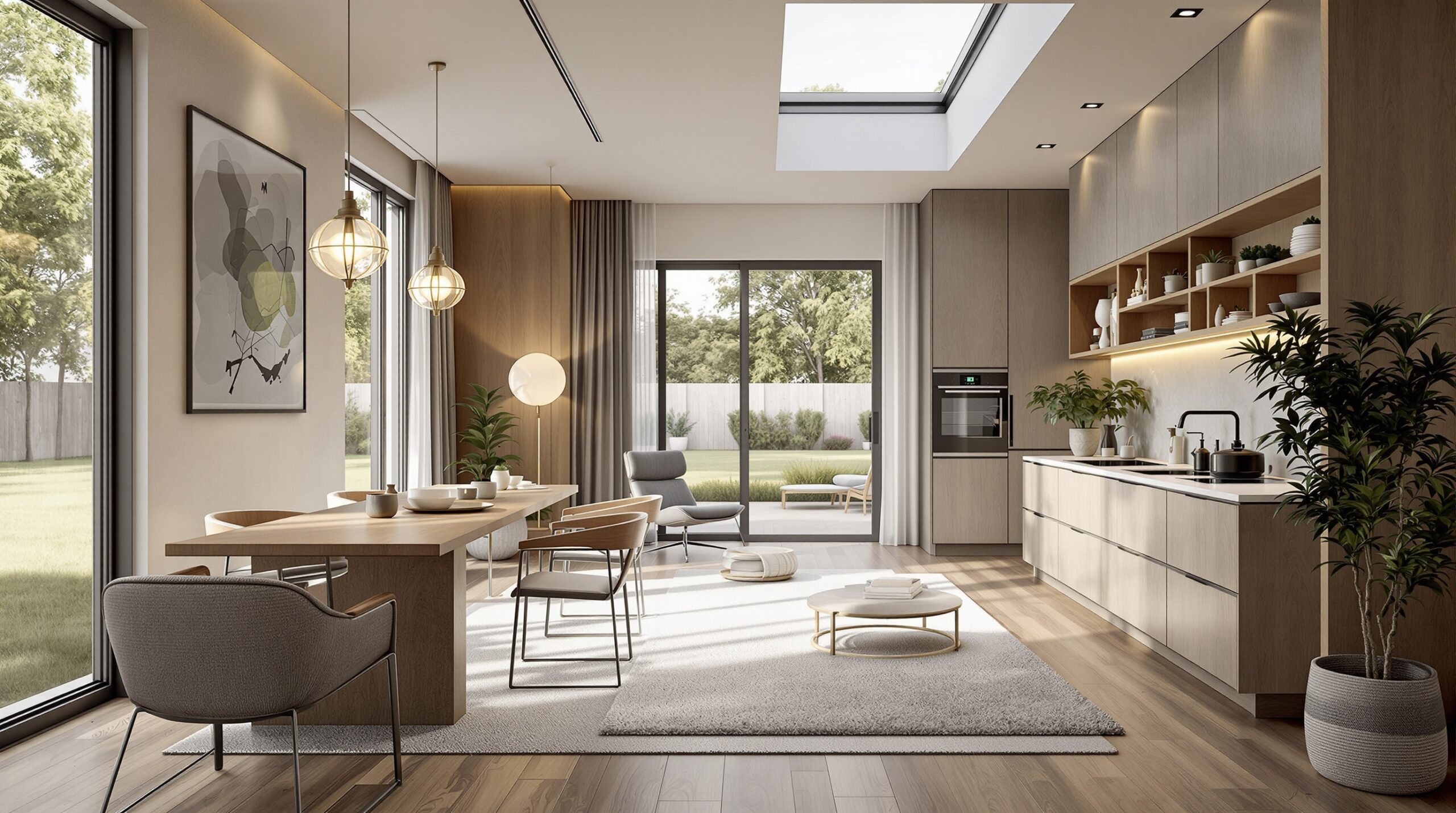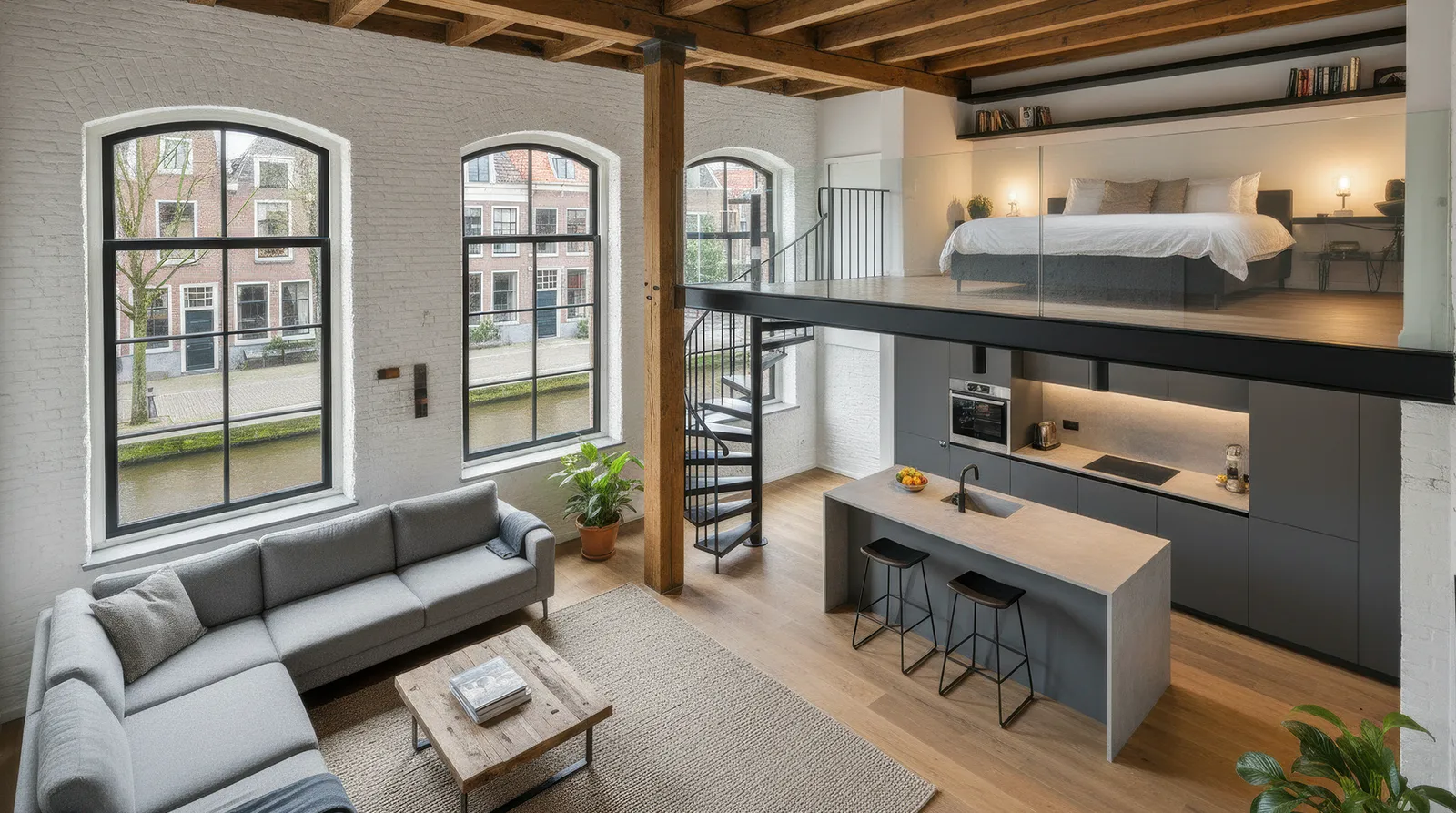Regenerative Renovations: Creating Homes That Give Back
Ever gazed at the perfectly proportioned gables of a Dutch canal house or the sleek lines of a modern villa and wished your own home could tell a similar story of thoughtful design and renewed purpose? You’re not alone. The drive to transform living spaces, making them not just functional but truly *regenerative* – homes that give back to their occupants and the environment – is a powerful current running through the Netherlands today. It’s more than just a lick of paint or a new kitchen; it’s about reimagining your home as a living entity, an investment in comfort, efficiency, and perhaps even a healthier planet.
But embarking on a renovation journey in the Netherlands can feel like deciphering a cryptic code. From bouwvergunning applications to a dizzying array of sustainable materials, the path to your dream home is paved with decisions. This article will be your guide, exploring the “why” and “how” behind the most significant home renovation trends in the Netherlands, demystifying the regulations, and shining a light on the materials shaping the future of our homes. We’ll explore house extensions that grow with your family, complete transformations that breathe new life into older properties, and the innovative construction techniques driving these changes.
Basic Concepts: Understanding the Dutch Renovation Landscape
Before any hammer swings or blueprint is even drawn, understanding a few fundamental Dutch concepts is crucial. Think of them as the bedrock upon which your renovation dreams will be built.
What is a “Bouwvergunning”?
The term bouwvergunning is more than just a bureaucratic hurdle; it’s your official permission slip from the local municipality (gemeente) to carry out construction work. Not all renovations require one, but significant changes like adding a house extension in Amsterdam, altering the building’s structure, or changing its use almost certainly will. Ignoring this can lead to hefty fines and demands to reverse the work. It’s akin to needing planning permission in other countries, and the process can be complex, often requiring architectural drawings and detailed plans. This is where professional guidance becomes indispensable.
The “Omgevingswet”: A New Era for Building and Environment
The Omgevingswet, which recently came into force, is a game-changer. It consolidates numerous laws and regulations related to the physical living environment into one overarching framework. This simplifies procedures but also places a greater emphasis on environmental quality, sustainability, and citizen participation. For renovators, it means a more integrated approach to planning, where environmental impact and quality of life are considered from the outset. It underscores the move towards creating homes that aren’t just for us but are also good for the world around us.
“EPC” and “BENG”: Measuring Your Home’s Energy Heartbeat
“EPC” (Energie Prestatie Coëfficiënt) and “BENG” (Bijna Energie Neutrale Gebouwen) are acronyms you’ll encounter if you’re thinking about energy efficiency. EPC is a historical indicator of a building’s energy performance, while BENG represents the current standard for nearly energy-neutral buildings, particularly for new builds and major renovations. While your existing home won’t necessarily need to meet BENG standards overnight, major renovations often trigger requirements to significantly improve energy performance. This isn’t just about ticking boxes; it’s about insulation, smart heating, and ventilation – all contributing to lower energy bills and a more comfortable living environment.
Main Sections: The Pillars of Dutch Home Transformation
Now, let’s explore the core components of modern Dutch home renovation, from adding space to embracing cutting-edge materials.
House Extensions: Growing Up, Out, and Under
Space is a premium in the Netherlands, particularly in cities like Amsterdam. So, how do you create more without moving? House extensions are a popular and often ingenious solution, allowing you to tailor your existing property to your evolving needs.
Dakkapel (Dormer Window) and Dakopbouw (Roof Extension): Reaching for the Sky
Imagine a small, cramped attic transformed into a bright, airy bedroom or a functional home office. This is the magic of a dakkapel (dormer window) or a full dakopbouw (roof extension). A dakkapel projects from the sloping roof, adding headroom and light, often requiring a bouwvergunning. A dakopbouw involves adding an entire extra floor or significantly extending the roofline, a more substantial project that almost always requires extensive planning and a permit. The “why” here is simple: unlocking unused potential within your property’s existing footprint.
Uitbouw (Ground Floor Extension): Expanding Your Living Horizons
Want a larger living room, a sun-drenched conservatory, or an expanded kitchen that opens onto your garden? An uitbouw, or ground-floor extension, pushes the boundaries of your home horizontally. This is a common method for creating more open-plan living spaces, enhancing natural light, and improving indoor-outdoor flow. The design considerations are paramount: how will it integrate with the existing structure? What impact will it have on your garden or neighbouring properties? Again, professional expertise is vital, not just for the structural integrity but also for navigating the permit process and ensuring aesthetic harmony.
Souterrain or Kelder (Basement Conversion): Digging Deep for Space
While less common in some parts of the Netherlands due to water levels, converting or excavating a basement (souterrain or kelder) offers another avenue for expansion. This can provide valuable additional living space, from secondary bedrooms to home cinemas or even an independent apartment. This is arguably the most complex type of extension, involving significant structural work, waterproofing, and ventilation. It’s a true feat of engineering, and a project that absolutely requires specialist knowledge to ensure safety and prevent future issues.
Complete House Renovations: A Fresh Start for Existing Structures
Sometimes, an extension isn’t enough. An older property might need a complete overhaul to meet modern living standards, improve energy efficiency, or simply reflect a new aesthetic vision. A complete house renovation in the Netherlands is an opportunity to redefine a home from the inside out.
Structural Integrity and Modernisation: Building from the Core
Many older Dutch homes, while charming, may have outdated foundations, compromised timber, or inefficient layouts. A comprehensive renovation often begins with addressing these fundamental issues. This might involve reinforcing floors, replacing rotten beams, or even underpinning foundations. Simultaneously, it’s an opportunity to modernise infrastructure – upgrading electrical systems, plumbing, and heating to contemporary standards, improving safety, and future-proofing the property. This foundational work, while unseen, is perhaps the most critical part of any deep renovation.
Energy Efficiency Upgrades: The Green Heart of Your Home
With rising energy costs and a collective drive towards sustainability, energy efficiency is no longer an optional extra; it’s a central pillar of modern home renovation in the Netherlands. This means a multi-pronged approach:
- Insulation: Upgrading wall, roof, and floor insulation is critical for retaining heat in winter and keeping your home cool in summer. Think about the thermal coat you wear in winter – good insulation works similarly for your house.
- High-Efficiency Glazing: Replacing single or older double glazing with modern HR++ (hoog rendement) glass or even triple glazing drastically reduces heat loss through windows.
- Ventilation Systems: A well-insulated home needs proper ventilation to maintain air quality and prevent damp. Mechanical ventilation with heat recovery (MVHR) systems are becoming increasingly popular, recovering heat from outgoing air to warm incoming fresh air.
- Renewable Energy Sources: Integrating solar panels (zonnepanelen), heat pumps (warmtepompen), and even small-scale wind turbines is becoming more mainstream, allowing homes to generate their own power or heating.
Each of these elements contributes to a lower carbon footprint and significantly reduced utility bills – a win-win for your wallet and the environment.
Layout Optimisation and Open-Plan Living: Flow and Function
Older Dutch homes often feature compartmentalised rooms. Modern living, however, frequently favours open-plan spaces that promote connectivity and natural light. A complete renovation offers the chance to rethink the internal layout entirely – removing non-load-bearing walls for expansive living areas or reconfiguring kitchens and bathrooms for improved functionality and aesthetic appeal. This requires careful consideration of structural implications and the flow of daily life within the space.
Construction Trends: Shaping the Future of Dutch Homes
What’s new on the Dutch construction horizon? Beyond the basic renovations, certain trends are transforming how we build and rebuild.
Modular and Prefabricated Construction: Speed and Precision
Think of it like building with high-tech Lego bricks. Modular construction involves manufacturing components or even entire sections of a house (like a bathroom pod or a complete roof structure) off-site in a factory. These are then transported to the site and assembled. The advantages are compelling: faster construction times, reduced waste, improved quality control, and less disruption to neighbours. This is particularly appealing for efficient house extension Amsterdam projects, where on-site space might be limited.
Circular Building Principles: Waste Not, Want Not
The Netherlands is at the forefront of the circular economy, and building is no exception. Circular building aims to minimise waste by designing buildings that can be disassembled, with materials reused or recycled at the end of their life cycle. This isn’t just about using recycled content; it’s about thinking proactively about the end of a building’s life from the very beginning. For renovators, this means exploring materials with high recycled content, choosing products that can be easily reclaimed, and considering the full life cycle impact of their choices.
Smart Home Technology: The Intelligent Home
From intelligent lighting systems that adjust to natural light levels to smart thermostats that learn your habits, home automation is no longer a futuristic fantasy. Integrating smart home technology during a renovation allows for unprecedented control over your environment, enhancing comfort, security, and energy efficiency. Imagine your blinds automatically closing to prevent overheating, or your ventilation system optimising based on indoor air quality – the possibilities are vast.
Renovation Materials: Building a Better, More Sustainable Home
The materials you choose define the look, feel, and performance of your home. The focus today is on sustainability, durability, and health.
Sustainable Building Materials: Conscious Choices
The shift towards sustainable building materials is profound, driven by environmental concerns and a desire for healthier indoor environments.
- Timber Frame Construction: Wood, particularly sustainably sourced timber, is seeing a resurgence. It’s a renewable resource, sequesters carbon, and offers excellent insulation properties.
- Recycled Content Materials: From insulation made of recycled denim or newspaper to bricks made from construction waste, materials with high recycled content are becoming increasingly available and performant.
- Natural Insulation: Materials like sheep’s wool, hemp, cellulose, and straw are gaining popularity for their excellent thermal and acoustic properties, breathability, and low environmental impact. They avoid the chemicals often found in traditional insulation, contributing to better indoor air quality.
- Low-VOC Paints and Finishes: Volatile Organic Compounds (VOCs) found in traditional paints can negatively impact air quality. Low-VOC alternatives ensure a healthier living space.
- Green Roofs and Facades: Incorporating vegetation onto roofs or walls improves insulation, manages rainwater, promotes biodiversity, and enhances urban aesthetics. This is especially impactful in densely populated areas.
Innovative Materials: Beyond the Conventional
Beyond established sustainable choices, new materials are constantly emerging, pushing the boundaries of what’s possible.
- Self-Healing Concrete: Imagine concrete that repairs its own cracks, extending its lifespan and reducing maintenance needs.
- Transparent Wood: Stronger and lighter than glass, yet partially transparent, offering fascinating architectural possibilities.
- Phase-Change Materials (PCMs): Integrated into walls or ceilings, PCMs absorb and release thermal energy, helping to regulate indoor temperatures passively, much like a battery for heat.
The “why” behind these material choices is multi-faceted: reduced environmental impact, improved indoor climate, longevity, and often, a distinct aesthetic appeal that sets a home apart.
Practical Tips: Navigating Your Renovation Journey
Ready to take the plunge? Here are some essential, actionable tips for your Dutch home renovation.
- Hire an Architect or Professional Designer: Even for seemingly small projects, a skilled architect or designer will translate your vision into a practical, buildable plan. They understand local regulations, material possibilities, and structural requirements, saving you time and potential headaches.
- Engage a Qualified Contractor (Aannemer): Do not attempt complex structural or regulatory-impacted renovations yourself. A reputable contractor will have the necessary expertise, certifications, and insurance. Seek multiple quotes and verify references.
- Obtain the Necessary Permits Early: Do not start work before securing your bouwvergunning. The application process can take several weeks or even months, so factor this into your timeline. Your architect or contractor can often assist with this.
- Prioritise Energy Efficiency: Integrate energy upgrades into your renovation plan from the outset. This isn’t just good for the environment; it makes financial sense in the long run through reduced heating and cooling costs.
- Plan Your Budget Thoroughly: Include a contingency fund (10-20% of the total budget) for unexpected costs. Renovations rarely proceed without a few surprises.
- Consider Phasing Your Project: If a complete renovation is overwhelming, consider tackling it in phases. For example, upgrade insulation one year and install solar panels the next.
- Communicate Clearly and Regularly: Maintain open lines of communication with your architect, contractor, and any other professionals involved. Clarify expectations, timelines, and costs frequently.
- Research Subsidies and Incentives: The Dutch government and local municipalities often offer subsidies for sustainable home improvements and energy-saving measures. Investigate what’s available for your project.
Conclusion: Building a Future-Ready Home
The Dutch home renovation market is dynamic, innovative, and increasingly focused on sustainability. From expanding your urban sanctuary with a cleverly designed house extension Amsterdam to undertaking a comprehensive energy-neutral overhaul, the possibilities are extensive. The key takeaways? Embrace professional guidance – from architects to experienced contractors – to ensure your project is compliant, structurally sound, and beautifully executed. Prioritise energy efficiency and sustainable materials to create a home that is not only comfortable and aesthetically pleasing but also kind to the planet and your wallet. By making informed choices, you’re not just renovating a house; you’re building a regenerative home that truly gives back, enhancing your life and contributing to a more sustainable future.

